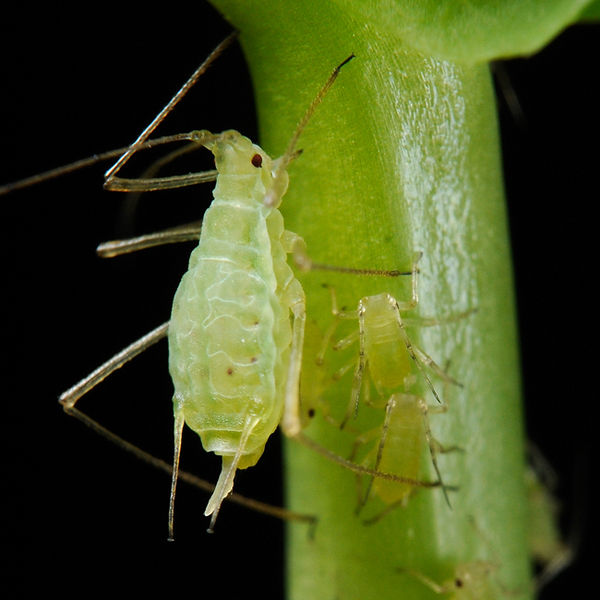
Like Cats, Aphids Land on Feet After Falling

Aphids may not be able to fly, but they can fall pretty well: Like defenestrated cats, the common insects usually land upright, to paraphrase a new study.
The study, published yesterday (Feb. 4) in the journal Current Biology, found that a common insect called pea aphids land upright 95 percent of the time after falling off a leaf. Pea aphids, which live off the sap of plants, don't possess any specialized appendages to help them glide or fall, unlike certain insects. So how do they do it?
In the study, aphids were made to let go of a leaf and freefall when researchers placed aphid-eating ladybugs nearby. The researchers then filmed the falling aphids and analyzed the footage, creating a mathematical model to explain how these sap-swilling insects accomplish this feat.
"What puzzled us was that the aphids did not seem to do much in order to right themselves," Gal Ribak, study co-author and a researcher at the Technion-Israel Institute of Technology, said in a statement. "Their body posture remained fairly constant during the entire fall." [Watch aphids land on their feet.]
The researchers found that it all has to do with the body shape of the aphid, as well as the position of its legs. When the aphids fall, they assume a uniform position, with legs outstretched. The air whistling past the falling insect gradually forces the body into the upright position, where it is most aerodynamically stable, according to the study. This trait, called "static longitudinal stability," is an important design feature of aircrafts that allows them to fly as straight as possible with minimal input from a pilot, keeping the plane from being knocked off course by wind and turbulence. The body shape of pea aphids also possesses this quality, the study found.
This trait was likely selected for by evolution because it allows aphids to escape near-certain death at the jaws of a predator like a ladybug. In the study, more than half of the aphids examined were able to latch on to an angled plant stem with their feet after falling, preventing them from hitting the ground, where their chances of survival would plummet.
Researchers also dropped dead aphids to see if the positioning of the legs made a difference. It did: Only 52 percent of the dead bugs landed upright. Somehow the aphids know where to orient their legs to maximize their aerodynamic stability, letting gravity carry them to the ground feet-first.
Sign up for the Live Science daily newsletter now
Get the world’s most fascinating discoveries delivered straight to your inbox.
Reach Douglas Main at dmain@techmedianetwork.com. Follow him on Twitter @Douglas_Main. Follow OurAmazingPlanet on Twitter @OAPlanet. We're also on Facebook and Google+.










